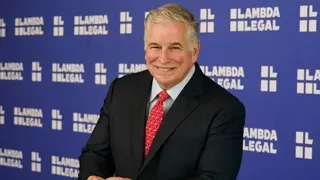June 27, 2012
US Health Care Reform Efforts Through History
Jason St. Amand READ TIME: 3 MIN.
WASHINGTON (AP) - The Supreme Court's upcoming ruling on President Barack Obama's health care overhaul law follows a century of debate over what role the government should play in helping people in the United States afford medical care. A look at the issue through the years:
1912: Former President Theodore Roosevelt champions national health insurance as he unsuccessfully tries to ride his progressive Bull Moose Party back to the White House.
1929: Baylor Hospital in Texas originates group health insurance. Dallas teachers pay 50 cents a month to cover up to 21 days of hospital care per year.
1935: President Franklin D. Roosevelt favors creating national health insurance amid the Great Depression but decides to push for Social Security first.
1942: Roosevelt establishes wage and price controls during World War II. Businesses can't attract workers with higher pay so they compete through added benefits, including health insurance, which grows into a workplace perk.
1945: President Harry Truman calls on Congress to create a national insurance program for those who pay voluntary fees. The American Medical Association denounces the idea as "socialized medicine" and it goes nowhere.
1960: John F. Kennedy makes health care a major campaign issue but as president can't get a plan for the elderly through Congress.
1965: President Lyndon B. Johnson's legendary arm-twisting and a Congress dominated by his fellow Democrats lead to creation of two landmark government health programs: Medicare for the elderly and Medicaid for the poor.
1974: President Richard Nixon wants to require employers to cover their workers and create federal subsidies to help everyone else buy private insurance. The Watergate scandal intervenes.
1976: President Jimmy Carter pushes a mandatory national health plan, but economic recession helps push it aside.
1986: President Ronald Reagan signs COBRA, a requirement that employers let former workers stay on the company health plan for 18 months after leaving a job, with workers bearing the cost.
1988: Congress expands Medicare by adding a prescription drug benefit and catastrophic care coverage. It doesn't last long. Barraged by protests from older Americans upset about paying a tax to finance the additional coverage, Congress repeals the law the next year.
1993: President Bill Clinton puts first lady Hillary Rodham Clinton in charge of developing what becomes a 1,300-page plan for universal coverage. It requires businesses to cover their workers and mandates that everyone have health insurance. The plan meets Republican opposition, divides Democrats and comes under a firestorm of lobbying from businesses and the health care industry. It dies in the Senate.
1997: Clinton signs bipartisan legislation creating a state-federal program to provide coverage for millions of children in families of modest means whose incomes are too high to qualify for Medicaid.
2003: President George W. Bush persuades Congress to add prescription drug coverage to Medicare in a major expansion of the program for older people.
2008: Hillary Rodham Clinton promotes a sweeping health care plan in her bid for the Democratic presidential nomination. She loses to Obama, who has a less comprehensive plan.
2009: Obama and the Democratic-controlled Congress spend an intense year ironing out legislation to require most companies to cover their workers; mandate that everyone have coverage or pay a fine; require insurance companies to accept all comers, regardless of any pre-existing conditions; and assist people who can't afford insurance.
2010: With no Republican support, Congress passes the measure, designed to extend health care coverage to more than 30 million uninsured people. Republican opponents scorned the law as "Obamacare."
2012: On a campaign tour in the Midwest, Obama himself embraces the term "Obamacare" and says the law shows "I do care."






